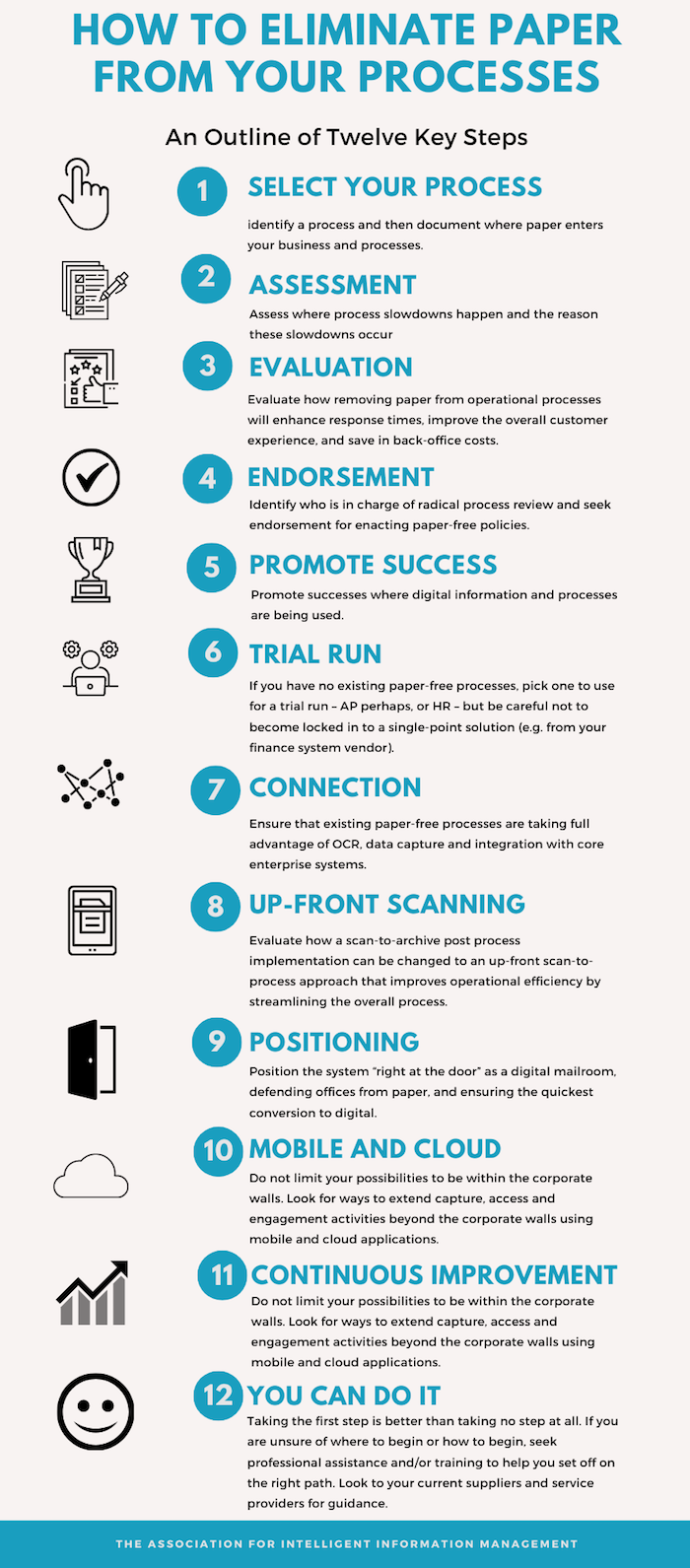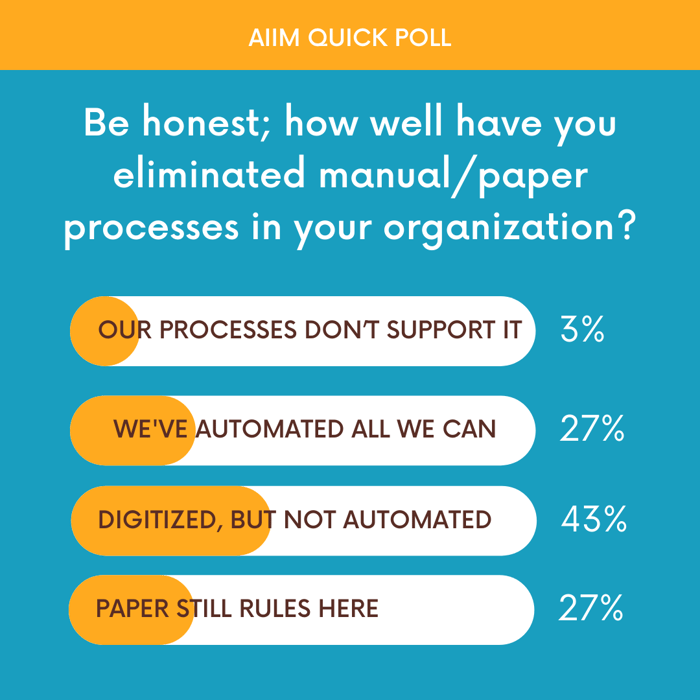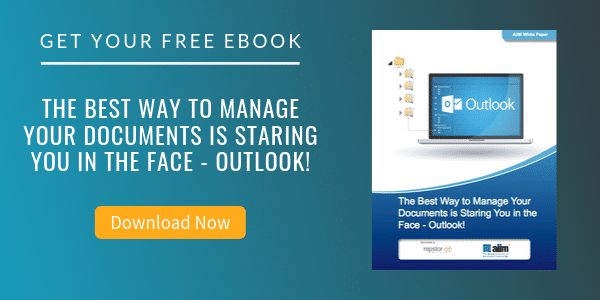
How to Eliminate Paper Processes
Despite the proven operational improvements to be gain by going paperless, paper is still prevalent in too many core business processes today including loan applications, insurance claims, and customer onboarding. After last year's mad dash to accommodate distributed workers and work places, the reticence to digitize paper processes is decreasing. 70% of AIIM survey respondents indicate that they plan to expand their efforts to encourage and support more digitally-born documents this year. And, 41% said they plan to fully embrace electronic forms.
In today's post, we'll take a holistic look at eliminating paper from your business processes by exploring:
- The Benefits of Paperless Processes
- How Today's Organizations Are Prioritizing
- Key Considerations for Getting Started
- Steps to Eliminate Paper
What are the Benefits of Eliminating Paper Processes?
Let's take a look at some of the benefits and reasons why more organizations are working to make the paperless office a reality:
- Streamlined Workflows: When the right content is accessible at the touch of a button, it takes only seconds to route and share documents to any number of people across multiple departments and systems. This ease of access greatly improves efficiency in a variety of contexts, such as approval processes.
- Greater Agility: Your competitors are only going to get faster, and the agility that a paperless office gives you is vital to remaining competitive.
- Reduced Business Risks: A fully digital environment allows you to work not only faster, but also safer. Access controls and data security make it easier and less expensive to maintain compliance, and reduces the chance of missing documents that could result in lost revenue. Compared to a paper-based system, enterprise content management (ECM) makes it easier to protect business secrets and confidential information, such as contract details as well as employee and patient data.
- Improved Collections: Accounting departments benefit greatly from going paperless, especially when it comes to collections. A big challenge for collections departments is that it’s often difficult to access the necessary documents while on the phone with a customer. With an ECM system, critical business documents are easily retrievable, which tends to shorten the collections cycle and improve cash flow.
- Increased Visibility: Using digital workflows instead of paper results in greater transparency, allowing management to monitor business processes in real-time. This makes it easier to keep tasks on track and to identify problems and opportunities for improvement.
Despite all of the advantages of paperless processes, many organizations struggle with taking the first step. Let's take a look at how organizations are doing with their paperless journeys.
Information Professionals Weigh-In on the Paperless Office
Using a quick poll on LinkedIn and AIIM's online community, we asked information professionals to take an honest look at the state of manual and paper-driven processes in their organizations. Here's how they responded:
5 Considerations to Help You Start Your Paperless Journey
- Going to the paperless office continues to be met with A LOT of resistance because people are emotionally attached to working with paper. This is a dynamic that managers have to be ready to take on. Leadership matters in overcoming resistance to paperless initiatives. AIIM notes that “mandates from above are the motivating trigger for the first paper-free process for 48% of organizations."
- There are both carrot and stick approaches to facilitating a transition to new digital workflows. Here’s an example of the carrot. Some companies outfit employees with desktop scanners and second monitors in advance to indicate “we’re making a big change and we’re going facilitate making digital work a success for you.” The sticks – thinning the ranks of conveniently placed printers and letting the paper supplies run out for days at a time, thus making old habits too painful to continue.
- Going paperless and digital transformation - two sides of the same coin. AIIM research indicates that 72% of organizations believe that “Business at the speed of paper will be unacceptable in a few years’ time.” The companies making the effort to modernize their processes are reaping the rewards, and they know that they are just getting started. NOW is the Time to Break Free of Paper.
- Remember that everyone now has a scanner in their pocket. Increasingly, knowledge workers are outside a central, physical office. Remote workers, pervasive business travel and satellite offices spanning time zones are the new normal. The only way to keep teams connected and productive is through mobile devices. Armed with scanning capabilities on their iPhone or Android device, these front-line workers can scan on the fly and eliminate paper at its source.
- Just. Do. Something. It’s easy to delay a content management decision. A decade ago, selecting a document management solution could be risky – software was often complex to integrate, required lots of consultants and professional services hours, and was difficult to use. Today, the opposite is true: with the right solution, implementation is simpler and the product easier to use. The risky decision is to do nothing.
12 Steps to Eliminate Paper from Your Processes





